In Search Of The Mysterious Fountain Of Youth
A. Sutherland - AncientPages.com - The desire for eternal youth is indeed very old. The myth of a fountain or spring with water that gives – not only youth – but also eternal life has been known in many cultures for millennia and represents a popular motif in various mythologies and religions.
Many say that such a phenomenon has never existed.
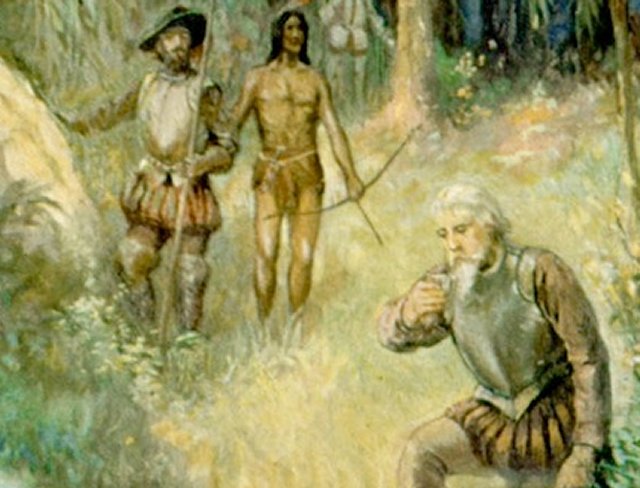
Sailing along the coast and landing, again and again, de Leon and his men searched the jungled forests and drank the waters of endless springs.
However, countless ancient texts are describing a mysterious place with water of magical properties offering a person immortality.
In Norse mythology, the Aesir gods used golden apples of the goddess Idun. These apples kept them young forever. Otherwise, they quickly became old and powerless.
Unfortunately, its location has been eluded by all who have written or heard about it. Frequently, the Water of Life motif is connected with the journey to the end of the world, a special place that belonged to gods, and from this place, every human should turn back.
Herodotus (484 BC to 425 BC) mentioned the fountain of youth or magical springs in his story of the Ethiopians when he spoke of exceptionally long life spans of people called the Macrobians (meaning long-lived), a legendary tribe of Aethiopia.
In his work ‘Histories’, about ancient traditions, geography, and the Greco-Persian War’, Herodotus recounted how the king of Ethiopia, protective of his lands, scoffed at the average life span of a Persian, only 80-year-old.
Most of his people, ‘the long-lived Ethiopians lived to be a hundred and twenty years old, while some even went beyond that age.’
Herodotus’ account of such a place is considered one of the earliest known.

Indian mythology and the earliest Indian literature have many accounts of miraculous water. The great Indian epic, the Mahabharata mentions the water of immortality.
The fountain of youth is also mentioned in the Alexander Romances’ – chronicles of the life and travels of Alexander the Great, who conquered most of the known world before he died around 323 BC., but… was also aware of the realities of aging.
According to Sura 18 in the Koran (and many other ancient records), Alexander searches for the Fountain of Youth (Water of Life) but unfortunately, the water looked forward to life, not backward to youth.
Moreover, he accidentally ascends the Holy Mountain Qaf (in Persian “Gap” which means “Unknown”), a place, which an ‘ordinary human ought not to seek…’ writes Richard Stoneman in his ‘Alexander the Great: A Life in Legend’
During his very short life (died at the age of thirty-two), Alexander sought Paradise on Earth, Youth, and Immortality but found nothing.
The natives of the Caribbean believed that a spring with magical properties existed in a mythical land called Bimini.
Juan Ponce de León, a conqueror from Spain, set off on a long expedition to find the Fountain of Youth in March 1513.
‘…Ferdinand the king of Spain, at once granted Ponce de Leon a Patent of Discovery (dated February 23, 1512), authorizing an expedition from the island of Hispaniola northward. The admiralty was ordered to assist Ponce de Leon and make available to him the best ships and seamen so that he might discover without delay the island of “Beininy” (Bimini)…’

During his very short life (died at the age of thirty-two), Alexander sought Paradise on Earth, Youth and Immortality but found nothing.
But the discovery of this island was not an easy task because there’s not one island but hundreds of islands in the Bahamas.
The waters of each stream were tasted and drunk— but with no evident effects… On Easter Sunday— Pasca de Flores by its Spanish name— a long coastline was sighted. Ponce de Leon called the “island” – Florida. Sailing along the coast and landing repeatedly, he and his men searched the jungled forests and drank the waters of endless springs. But none seemed to work the expected miracle.
‘…More Indians were questioned. Some seemed unusually young for the old ages claimed by them.
Others repeated legends that confirmed the existence of the Fountain…’
In 1521, Juan Ponce de León set off on yet another great voyage to search for the Fountain of Youth. He became the first European who arrived in America by discovering Florida in 1513, but he did not find what he was looking for.
Instead of Eternal Youth, Ponce de Leon found death by an Indian arrow.
Indian mythology and the earliest Indian literature have many accounts of miraculous water. The great Indian epic, the Mahabharata mentions the water of immortality.
One can say that the very search for the legendary source of water with supernatural qualities continues. Although we live in an enlightened society and have Internet access to extensive knowledge, the desire to find a fountain of youth has remained.
Unfortunately, it most probably does not exist, so the only way to at least slow down the aging process is to use anti-aging products and eat healthy food.
Written by A. Sutherland - AncientPages.com Senior Staff Writer
Copyright © AncientPages.com This material may not be published, broadcast, rewritten or redistributed in whole or part without the express written permission of AncientPages.com
More From Ancient Pages
-
 Ancient Mystery Of The Unidentified Strangely Dressed Man Found In Massachusetts And His Connection To Undeciphered Rock Carvings
Featured Stories | Sep 19, 2024
Ancient Mystery Of The Unidentified Strangely Dressed Man Found In Massachusetts And His Connection To Undeciphered Rock Carvings
Featured Stories | Sep 19, 2024 -
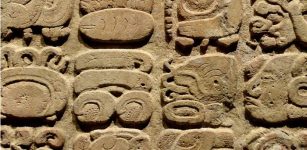 On This Day In History: Spanish Priest Diego de Landa Burned The Sacred Books Of Maya – On July 12, 1562
News | Jul 12, 2016
On This Day In History: Spanish Priest Diego de Landa Burned The Sacred Books Of Maya – On July 12, 1562
News | Jul 12, 2016 -
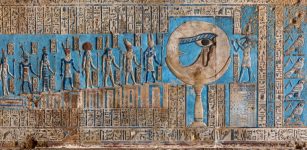 Secrets Of Egyptian Blue – World’s Oldest Artificial Pigment And Its Extraordinary Properties
Featured Stories | May 10, 2021
Secrets Of Egyptian Blue – World’s Oldest Artificial Pigment And Its Extraordinary Properties
Featured Stories | May 10, 2021 -
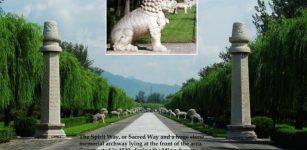 Amazing Thirteen Ming Tombs: Gigantic Stone Animals And Human Figures Were Symbols Of Royal Power
Civilizations | Oct 1, 2018
Amazing Thirteen Ming Tombs: Gigantic Stone Animals And Human Figures Were Symbols Of Royal Power
Civilizations | Oct 1, 2018 -
 On This Day In History: Malcolm III, King of Scots Died – On Nov 13, 1093
News | Nov 13, 2016
On This Day In History: Malcolm III, King of Scots Died – On Nov 13, 1093
News | Nov 13, 2016 -
 Strange Ancient Sky Phenomenon – It Was Not A ‘Natural’ Space Object – Scientist Said
Featured Stories | Nov 5, 2019
Strange Ancient Sky Phenomenon – It Was Not A ‘Natural’ Space Object – Scientist Said
Featured Stories | Nov 5, 2019 -
 Ancient Medical Machine Ahead Of Its Time Hidden In Emperor’s Temple – Secret Science Knowledge Examined
Featured Stories | Apr 20, 2018
Ancient Medical Machine Ahead Of Its Time Hidden In Emperor’s Temple – Secret Science Knowledge Examined
Featured Stories | Apr 20, 2018 -
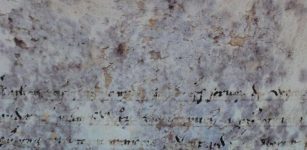 Part Of Secret Vatican Manuscript Decoded
Archaeology | Sep 7, 2017
Part Of Secret Vatican Manuscript Decoded
Archaeology | Sep 7, 2017 -
 Oldest Scandinavian Ship-Burial Identified Re-Writes History – Amazing Find That Predates The Viking Age
Archaeology | Nov 14, 2023
Oldest Scandinavian Ship-Burial Identified Re-Writes History – Amazing Find That Predates The Viking Age
Archaeology | Nov 14, 2023 -
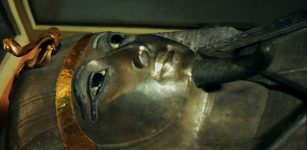 Pharaoh Psusennes I Was Buried In The Silver Coffin Decorated With Gold
Featured Stories | Jan 25, 2021
Pharaoh Psusennes I Was Buried In The Silver Coffin Decorated With Gold
Featured Stories | Jan 25, 2021 -
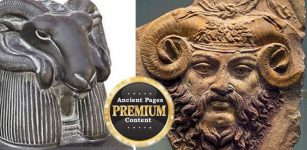 The Enigma Of People And Gods With Horns In Ancient Times
Featured Stories | Nov 7, 2015
The Enigma Of People And Gods With Horns In Ancient Times
Featured Stories | Nov 7, 2015 -
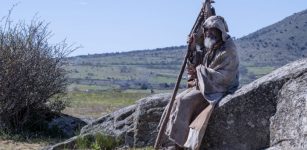 Enigma Of Étienne Le Ray – Unusual Vagabond Prophet Nicknamed Nostradamus Of Brittany
Featured Stories | Sep 28, 2020
Enigma Of Étienne Le Ray – Unusual Vagabond Prophet Nicknamed Nostradamus Of Brittany
Featured Stories | Sep 28, 2020 -
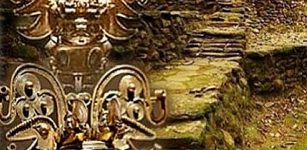 Mysterious Lost City Of The Tairona Hidden In The Jungles Of Colombia
Civilizations | Nov 9, 2018
Mysterious Lost City Of The Tairona Hidden In The Jungles Of Colombia
Civilizations | Nov 9, 2018 -
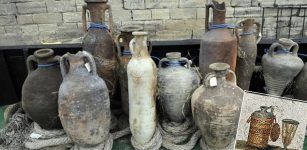 Posca: ‘Wine Of The People’ Was Popular In Ancient Rome And Greece
Ancient History Facts | Sep 26, 2018
Posca: ‘Wine Of The People’ Was Popular In Ancient Rome And Greece
Ancient History Facts | Sep 26, 2018 -
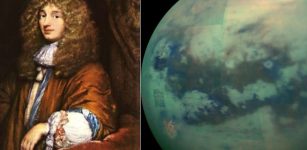 On This Day In History: Christiaan Huygens Discovers Saturn’s Largest Moon Titan – On Mar 25, 1655
News | Mar 25, 2017
On This Day In History: Christiaan Huygens Discovers Saturn’s Largest Moon Titan – On Mar 25, 1655
News | Mar 25, 2017 -
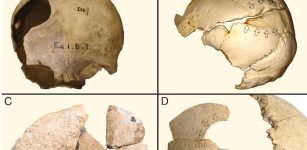 Violence Was Widespread In Early Farming Society – New Study
Archaeology | Jan 23, 2023
Violence Was Widespread In Early Farming Society – New Study
Archaeology | Jan 23, 2023 -
 Viking Age Mass Grave Reveals Gruesome Discovery At Historical Village Of Repton, England
Archaeology | Feb 4, 2018
Viking Age Mass Grave Reveals Gruesome Discovery At Historical Village Of Repton, England
Archaeology | Feb 4, 2018 -
 Dancing Around The Throne: Networking In The Time Of King William I
Ancient Traditions And Customs | Jul 4, 2023
Dancing Around The Throne: Networking In The Time Of King William I
Ancient Traditions And Customs | Jul 4, 2023 -
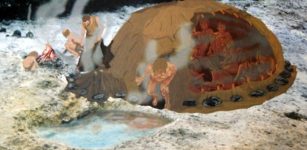 Enigmatic Bronze Age Fulacht Fiadh: ‘Kitchens’ Of The Legendary Irish Warriors
Civilizations | Nov 26, 2018
Enigmatic Bronze Age Fulacht Fiadh: ‘Kitchens’ Of The Legendary Irish Warriors
Civilizations | Nov 26, 2018 -
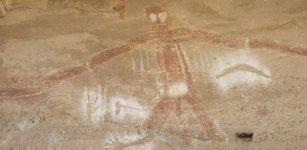 ‘Dates Add Nothing To Our Culture’: Everywhen Explores Indigenous Deep History, Challenging Linear, Colonial Narratives
Featured Stories | Mar 10, 2023
‘Dates Add Nothing To Our Culture’: Everywhen Explores Indigenous Deep History, Challenging Linear, Colonial Narratives
Featured Stories | Mar 10, 2023
